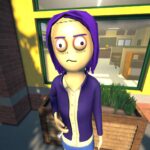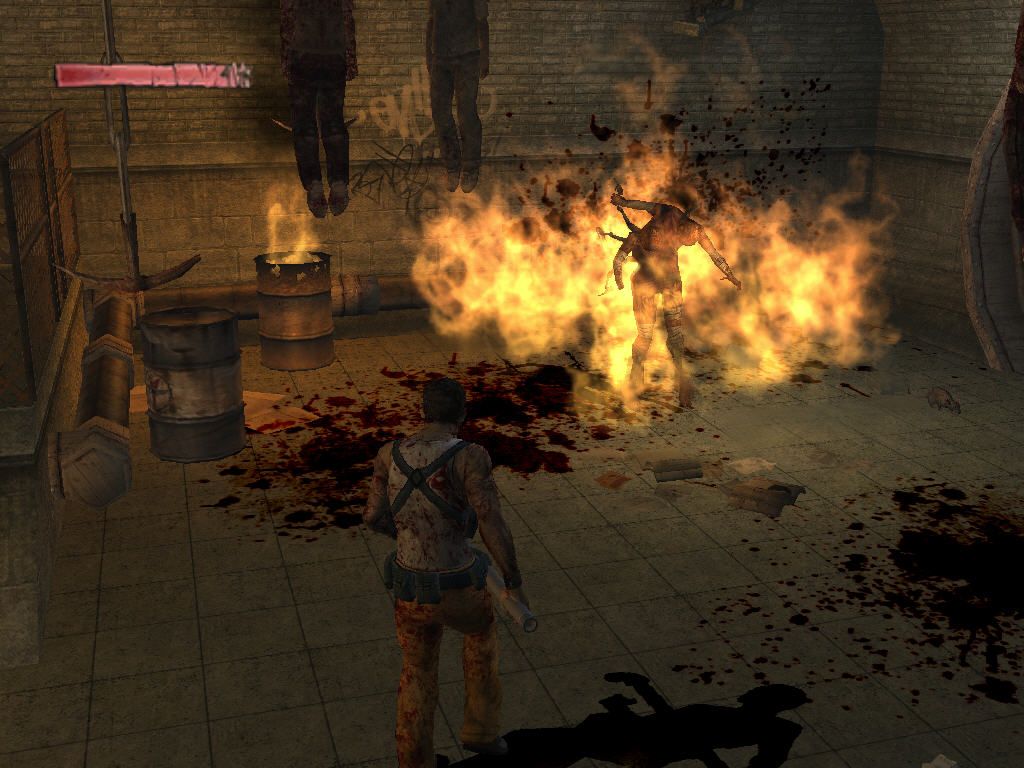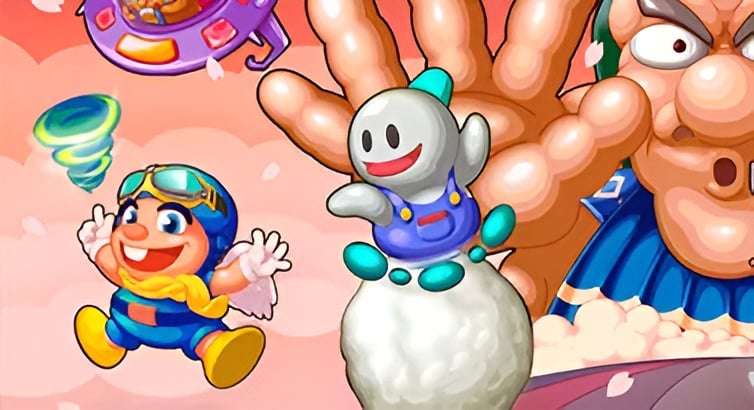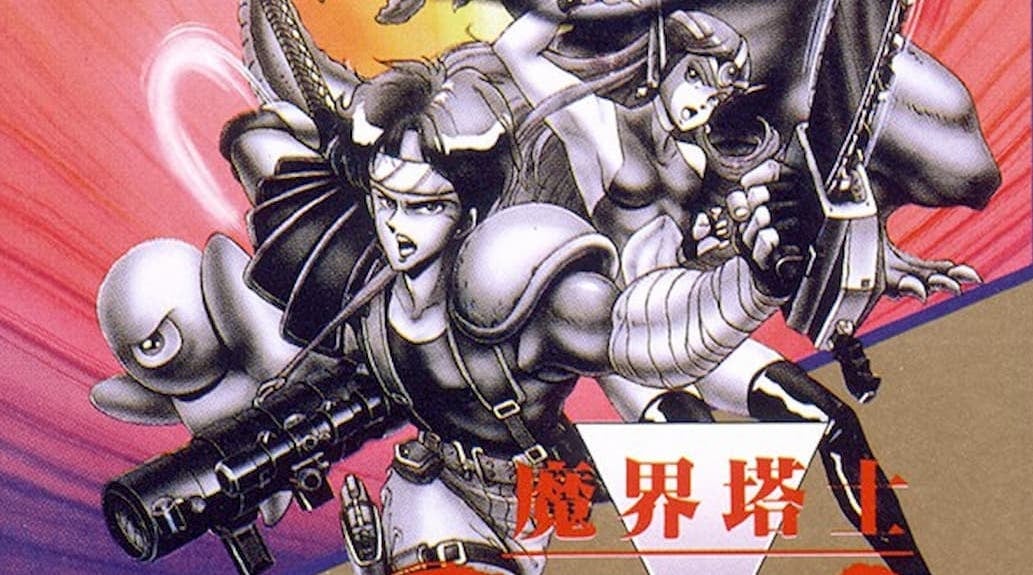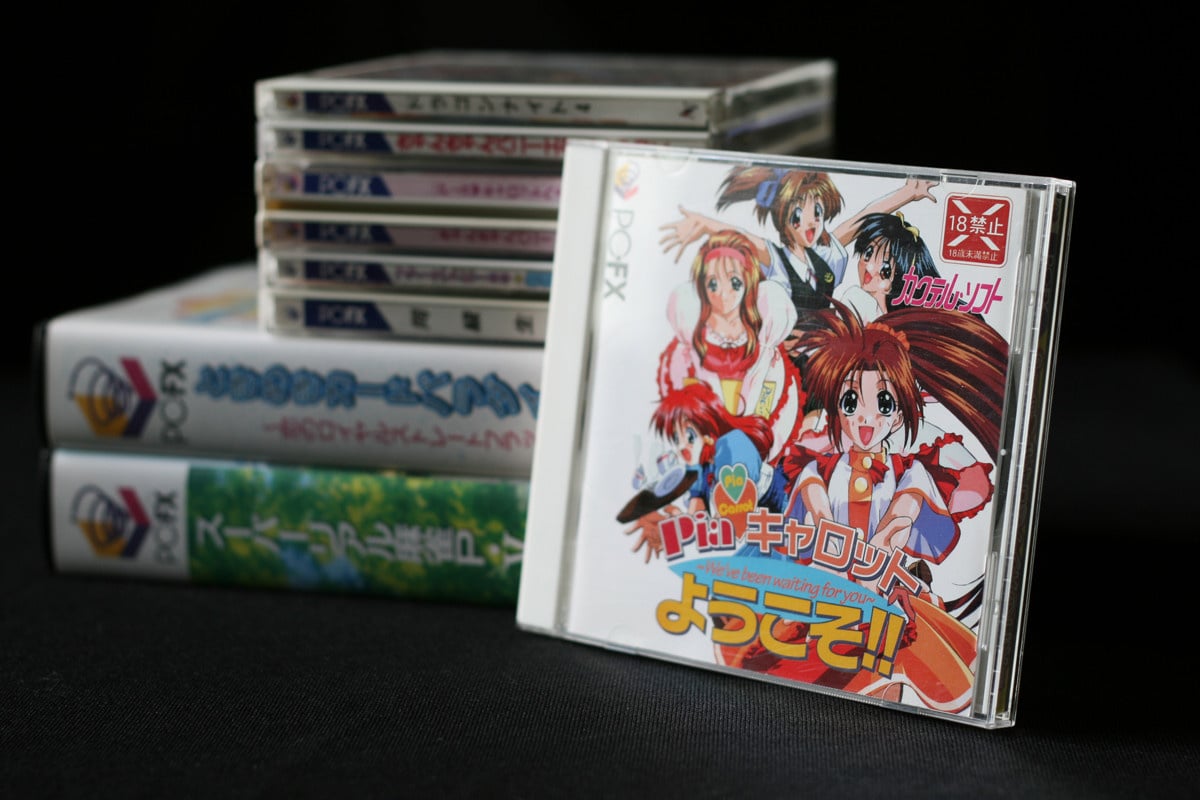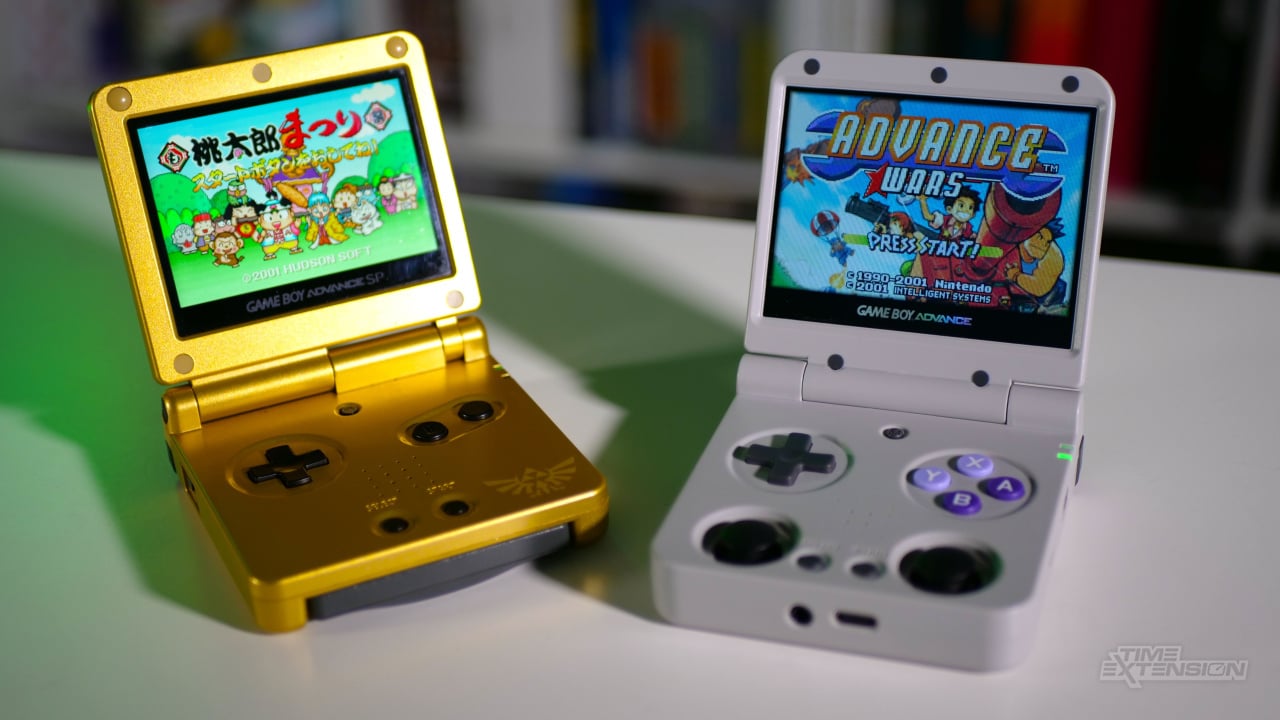“I keep the ends out for the tie that binds, because you’re mine, I walk the line.”
-Johnny Cash
Gritty, unmistakably smart and brewed in a combination of adventure, action, survival-horror and shooter gameplay, Surreal Software and Midway’s The Suffering was a combined million-seller on the PlayStation 2 and Xbox when it was released in 2004. It was also a game that proved Midway still could pump out quality games that were not in the NBA Jam or Mortal Kombat formula. The Suffering was so good in fact that it prompted a sequel, The Suffering: Ties That Bind, a rarity for a non-MK or Sports game from the publisher.
Expanding the story and combat for the main character, Torque, The Suffering: Ties That Bind was an industrious addition to the series that in spite of everything it did well, didn’t resonate with audiences the same way. Selling just under 200,000 units across the PlayStation 2 and Xbox, it was not nearly as financially successful as the original, but wasn’t a flop either. Featuring the voice acting work of Michael Clarke-Duncan and the continuation of the original story (the game actually read your memory card and searched for saved games from the first game and began the sequel based on the ending you received), as well as the ability to switch seamlessly from first and third-person shooting gameplay, it’s a lost gem from a special time in industry history.
But for Richard Rouse III, the writer of both the original game and the sequel, it was an important time in his career as well. Although known now for his work on other games such as Quantum Break, Wheelman and Sunset Overdrive, as well as his indie title, The Church in the Darkness, Rouse remembers his time at Surreal Software as one in his life that has created a plethora of lessons learned.
“It was a lot different for me personally than the first game because the first game was a new IP and it was much riskier in a lot of ways,” Rouse said. “The game that I was working on before the first Suffering was canceled. It was a Western-game called Gunslinger and that had turned into another game that died and we shipped the Drakan game as well, but that wasn’t me as the creative lead, that was me working on a project the studio was doing, which was fine, but it was different than a project I was writing and creating.
“For the first Suffering, the feeling the whole time was, ‘Is this going to work out? It’s all going to fall apart.’ It was super stressful. For the second game, it was more like, ‘Well, we know how to do some of this, at least.’ We were all a little more confident about it- maybe to our detriment. But it was definitely less of a stressful experience. I was also working on other projects during the second game because the studio was trying to make other games and there was a variety of them that didn’t happen. Creatively the first game had been exhausting and there were other games I wanted to try, and I was spending more time on those other games because I was now the Studio Creative Director. That was a bit of a distraction from Ties that Bind.”
But with confidence in the series as a whole, Midway gave Rouse and his team the green light and in turn, they got to work. Because of its prior success, Midway saw The Suffering as the type of series they could build their company around. “The first game was published by Midway and they wanted a horror game because they didn’t have one in their lineup and they thought it fit considering they were an M-rated company with Mortal Kombat and everything. I feel like we started the sequel before the first game had even come out because Midway had acquired Surreal Software around the time the first game was shipping,” Rouse said. “They had wanted to do a sequel. Whenever you have a game that’s doing pretty well at a Triple-A studio, you start thinking about doing sequel work even before you’re sure the first game is a success. Then it sold better than any other adventure game Midway had done at that point. Obviously they were more known for Mortal Kombat and sports franchises that did really well, but they never had an action/adventure title that was enough of a success to get a sequel. And The Suffering did well enough that they wanted to move ahead with it. But the crazy part of it was that they wanted the sequel in a year. That was because there was a big trend to make more games annual. Obviously, that worked for games like Madden and around that time, Silent Hill was trying to do it; they had done Silent Hill 3 and then Silent Hill: The Room was coming out approximately one year later and was made by a different team and wasn’t even a Silent Hill game originally. But they were trying to do it, so Midway wanted us to try it. But the year turned into 18 months because a year was just too short. But even with 18 months, it was definitely a lot more of a hurry than the first game.”
Trying to keep up with trends and the competition, Midway put The Suffering into a category it didn’t necessarily belong in. It wasn’t Madden or even Silent Hill. With its deep story alone, it took time to craft. With third-person combat and exploration, it wasn’t a copy and paste gig. A sequel to The Suffering needed time, something obviously a shortened development cycle wouldn’t be able to offer. Although this was the first time Rouse was in this situation with Midway, with Surreal, he’d seen the results of what a rushed, or even altered sequel could do to a game’s look, feel and story. His goal was to find a way to make it work. That was where the real challenge was.
“The first game was never thought of having a sequel,” Rouse said. “It was interesting going back in Surreal Software’s history because they had done a game called Drakan. It was the first game the studio shipped, Drakan: Order of the Flame. They had written it as a cliffhanger; it didn’t really finish. And then they did a sequel, Drakan: The Ancients Gates and they realized they didn’t like anything from the original game in terms of plot and how it ended . So they didn’t even conclude the cliffhanger. They patched something on – but really they just started over. So I never wanted to write a story as a cliffhanger, unless I was a novelist and had more control over making another one. Games have to make enough money to justify spending X-millions of dollars on the second one.”
The story for the first game was much more self-contained. In the first story, we had our plot and the main attributes of the game, like it was on an island and the main character had amnesia, and the game was set in a prison. All that stuff was very early on and basically stuck the whole time, whereas the second game was more like ‘What is this game? What are we doing?’ Despite the much shorter development cycle, finding out what the game was took a lot longer. There’s more of a well of concept art that never turned into anything for that game than for the first game.”
One of the things the team had to find out was the type of gameplay improvements they were going to employ. The original game was a third-person Survival Horror/Adventure with shooting elements, that controlled largely like a first-person shooter. The second game changed the formula up a bit and offered both first and third-person views. While this is standard for many games today, The Elder Scrolls and Fallout games, for example, do it seamlessly, doing it in 2005 wasn’t exactly conventional. For Rouse and the team though, even with the shortened development time, their goal was to always maintain the integrity of the series and continue to grow.
“Doing both modes came out of The Legend of Zelda: Ocarina of Time-era games for the N64. Most of the game, you’d be in third-person with Link, but you’d also be able to switch to first-person to look around. And that’s how it started in The Suffering. Then it turned into ‘Oh, I should be able to move in the look around view.’ Then it turned into ‘Oh, I should be able to shoot stuff in the look-around view.’ Then, you’ve got two games suddenly,” Rouse said. “Some people really like one or the other and that was identified as something early on as ‘let’s make this even better’ in the second game, to make the two different modes more competitive on their own. The first game was definitely developed as a third-person game, with a first-person mode that was added and tried to work, with not a lot of development time. There was a lot more development time focused on making it work in the second game. Personally I think it was worth it. But I think some people on the team would still say we should have picked one and just stuck with it instead of trying to do two things.”
With attention paid now to two views, gamers of different ilks could now enjoy it the way that they preferred. While understated, playing Ties That Bind in the first-person mode in some of the game’s tighter corridors definitely made for some scary situations, making the work the team put into the mode worthwhile for the legacy of the series. Definitely one of the better additions to the franchise, however, were the improvements to combat. They did come at a price though. “I liked that we switched to the two-gun system, but it just felt like Torque had too many weapons. There were ammo lockers too where you could get all this ammo and that just added to the ‘monster closet fatigue,’ the endless shooting that would go on for too long.”
The new two-gun system and hordes of enemies changed the flavor of the game in several ways, but it wasn’t the biggest alteration; the updated Insanity mode was. In-game one, that was anything but the case. In the original game, when Torque was bombarded by enemies, he could trigger the mode, which then allowed him to transform into a monster and destroy his enemies. Visually stunning and creepy, it’s one of the highlights of the first game. At the same time, with an arsenal of weapons like a Tommy gun, dual revolvers and a shotgun players didn’t have to use the Insanity mode nearly as much as the team would have liked.
In-game two, the ante was raised in terms of combat and now Torque’s “Insanity” mode was front and center. But, it ultimately came at a price that changed a lot about the formula that worked so well for the first game. “The improvements added to the Insanity mode were some of the better improvements that were done,” Rouse said. “Just in terms of the variety of things you could do with that creature. I liked that stuff. For me, the game never quite- there was an established style to the combat in the first game. In the second game, there were a lot more waves of combat going on, so you’d go into an area and you’d just fight things for a very long time. Things would spring up in different places and directions and it would just go on and on. In the first game, you’d fight a set of things and then you’d move on to another area. I think if you would measure out the real estate of each game by the square foot, you’d find the first game was much bigger than the second, just in terms of the places that you went to and how big they are and the as a result, the variety of places you can have combat. I think that was to the game’s detriment. But on the other hand, using the game’s new insanity attacks were a lot of fun. And because there were so many more guys to fight, you’d think ‘I’ll use this crazy insanity attack I have’, and it really helped you get out of those epic combats. And they were fun to use.”
While the new camera view and deeper and more frequent combat changed the formula up a bit in Ties That Bind, the additions and continuation to Torque’s story are some of the most important. No longer set in a scary, dark prison, Rouse and the team had to take Torque to a brand new location. And most importantly, it had to make sense. “The first game was set on an island and we wanted it to make sense that a variety of historical events could have happened there,” Rouse said. “This included a slave ship that crashed on Carnate Island and the insane asylum, as well as the witch trials. There was even a subplot that got cut where there were Spanish Conquistadors at one point. It was never used or really developed, but it was something that existed for a little while. To make all of these things things fit together, the island had to be located someplace between where the witch trials took place, which was more near the North East, but where there might also be a Slave Ship, which was more the South. So we settled on the Mid-Atlantic. It was always stated it was off the coast of Maryland. If you remember the first game, the Maryland Flag is shown for that reason. Then it made sense that if Torque was in a Maryland Prison that he was from the area, so we had Torque’s group home that was mentioned in the first game be in Baltimore. One of the artists in the game, Mark Bullock (The Elder Scrolls 3: Morrowind) was from the area, so he was a great resource and he had a lot of ideas on how to make the game feel like Baltimore. For example, the movie theater in the game was modeled to look like one from Baltimore, something like The Senator. Mark was great for that.”
The decision to move the location of the game was also helped by the fact that Baltimore was garnering more mainstream popularity at the time as well. “Around the time of the first game, I had gotten into the work of David Simon. I read his first book, Homicide, that got turned into the TV show, Homicide – Life on the Street. I was a big fan of that TV show before I even started The Suffering. Then I had read The Corner, which was another David Simon book about a drug corner in Baltimore, which was a history of all of the dealers, addicts and people that populated a specific corner in the city. Simon then went on to create the show The Wire; it’s what he’s most famous for, but I hadn’t seen The Wire when we started The Suffering 2, but I did check it out when we were somewhere in the middle. It’s one of my favorite shows, ever. I always liked his stuff, but The Wire was just an even more intense version of what he had done before. So ultimately, The Wire wasn’t a direct inspiration as much as his previous work was. It just made so much sense that someone who had the tough upbringing that Torque did would come from a place like Baltimore.”
So with a change of scenery confirmed, Rouse then had the task of trying to maintain Torque’s signature noir persona- one of the coolest things about the original game. That job would prove to be just as difficult as clearing a room of enemies in the game. “We tried to make him a continutation of the character from the first game, and I think we mostly succeeded,” Rouse said. “But there was this executive-level mandate that he should talk in the second game. That was something I wasn’t in favor of. They also wanted him to be voiced by a celebrity actor. The way that I worked around that was we ended up having the character of Blackmore, who’s your alter-ego, so then that alter ego could do most of hte talking. I thought I could make Torque a man of very few words. I believe he only has about 10 lines in the whole game; there’s like one in the opening scene and there’s a couple of others in key places, sort of like if you’re a fan of the GI Joe comics, the Snake Eyes character. He never said anything, except for a very few times and it was great. I figured that would work because we could justify getting a celebrity voice actor to play Blackmore as well, who had a ton of lines. We ended up getting Michael Clarke Duncan, rest in peace, to play Torque and Blackmore. He was amazing to work with. But that, to me, was a big change, to give that character a little bit of a voice and then to have the Blackmore character be the complete opposite of Torque.”
Playing in films such as The Green Mile, Armageddon, Daredevil and The Whole Nine Yards, Duncan’s participation in the game gave it a level of credibility and made it obvious this was no normal sequel. That doesn’t mean it was a straight-ahead process though. “He was sent the Michael thescript of what he was going to record ahead of time,” Rouse said. “So he shows up to the studio and he was a super nice guy. He was even on time, which is rare for a celebrity at a voiceover session. So I go, ‘Here, I’ve got a copy of your script,’ and I gave him a copy of the script for Torque and Blackmore and he’s all like, ‘This is a lot more.’ So I say, ‘Well didn’t they send you everything before?’ He then says, ‘Yeah, but this is what they sent me,’ and he shows me Torque’s script, which had ten lines in it. He says, ‘I thought this was all I was doing.’ I was very appologetic but said we really need him to do the all the lines. He was super professional about it and did all of Blackmore’s lines right there. Even though he was totally misled to think he was just doing ten lines. Instead, he did hundreds. But that turned out pretty well.”
Duncan’s walking into a major part in a video game when he thought he had a small one is a microcosm of The Ties That Bind’s entire development cycle. From day one, there was an objective to make a game, but the team never quite was able to grasp what they wanted to accomplish and had a myriad of obstacles at every turn. “I think we spent too long wondering what the game was in the beginning,” Rouse said. “That hurt us in terms of how long we had to work on the game. I also felt that the game was too hard in the end. I said before there were a lot of waves of enemies and so much combat in general. I think that was the result of not enough of us playing the game all the way through in the final months leading up to launch. We didn’t understand it felt fatiguing, and made it feel less like a horror game.
“I also felt that we spent too much time on our human enemies. In the first game, one of the complaints was that the human enemies weren’t that sophisticated, that if you got in a shootout with them, they wouldn’t crouch or hide or do the things you’d expect many human enemies to do in a shooter game. So it was decided that we were going to get those human enemies to be better. That’s why had a para-military force as one of the antagonists in the game. We put so much time into them, so we integrated them into the story. I don’t think it worked on either level. I think the game lost its horror tone because there was too much military stuff in there. The AI done for those enemies were cool and they were compelling enemies, but I don’t think it was the improvement most players were hoping for. I think they wanted crazier monster enemies over a more robust human enemy. I don’t think that was the smartest place to spend our bucks.”
At one time, even deciding on a name for the game proved to be a challenge. “The origin of our final name was partly Johnny Cash,” Rouse said. “I was very into him at the time. I still am a very big fan. The line is from I Walk the Line. ‘I keep the ends out for the tie that binds, because you’re mine, I walk the line.’ Our title is a bit different than that, so it’s not a direct rip-off. But the meaning of ‘Ties that Bind’ for me has always been family bonds. Torque is still obviously tied up in what happened with his wife and his kids. In the ending where you defeat Blackmore, you can see Carmen (Torque’s wife) kind of coming back to life, maybe, it’s kind of hazy, but they embrace for the first time that the player has ever seen. Having also dealt with growing up in the group home, Torque has had an absence of family, so it made the title even more fitting.
“For a while the game was called, The Suffering: Oblivion. But during development, the Elder Scrolls: Oblivion was announced. One of the members of the team used to work at Bethesda and knew that was the name of the game, but couldn’t say anything because he was under a non-disclosure agreement. We hadn’t announced the game yet, but we made some mock logos with it. There was no marketing campaign around it or anything. So when that happened we changed it. I hadn’t liked the name Oblivion for our game anyway. It didn’t feel that strong. I had suggested Ties That Bind, but Stephen Crane, a guy I really respected at Midway said, ‘It’s too on the nose. You need something more subtle.’ There were a lot of other names, but it turned out Steve was the only one who didn’t like Ties That Bind, so he lost that particular argument.”
Away from a name change, the game’s story also went through a ton of revisions, adding to the overall stress of the development cycle. “There was originally a version of the game that was more military when the whole game wasn’t going to be set in Baltimore,” Rouse said. “It was going to be set inside of a haunted military base. It had a brig in it, so it could have definitely had a lot of prison horror that way, but it had a nuclear submarine level that we did concept art for. While I was sort of poo-pooing on the military stuff earlier, I still like that idea better in some ways. Like the thought of being on a haunted military base is more immediately evocative than a haunted Baltimore.”
While the game’s name and story changed during the development process, if Rouse had his way, there’s plenty of other things he would have tweaked. “I really liked the idea of Jordan character, who was the woman who led the para-military organization. She was trying to harness the supernatural powers for her own ends,” Rouse said. “I like the idea too that if Torque didn’t reconcile with Carmen because he was going the dark route, that there was still someone to have an emotional connection with- it’s Jordan, someone who is so different from Carmen. I so wish I’d had another pass on her as a character, to just make her a little more engaging. I felt like she was is still on the first draft, that she needed more time to discover her voice. I would have liked to redo some of the voice stuff with her (actress Rachel Griffiths) too – I think she could have been even better if we’d gone a different direction with her character. But unfortunately, once you’ve done “celebrity” voice over in most cases it’s just too expensive to redo it
“I also wished that we had placed more of the game in Baltimore’s infamous housing projects. We had discussed the game taking place in the projects, but we didn’t immediately see how it would lead to good gameplay, in terms of the art and the level layouts. When you watch The Wire, you can see a lot of those public housing spaces, and we never got that feel in the game.
“There’s also a movie that I saw towards the end of the development, Candyman, which had come out years before, and I don’t know why I’d never seen it – I had thought with a name like that it was a Chucky type of movie, but it’s actually very complex and nuanced in what it portrays and says about that. It’s set in Cabrini Green, the infamous Chicago Housing Project. I always worried if we set the game in a place like that, we’d run into the same problems you find with setting a game in a hotel. You never want to set a game in a hotel because it’s a hallway full of doors and all the doors are the same and all the rooms behind the doors are the same. Almost every time I play a game that has a hotel in it, I wish they’d set it somewhere else. But I think that we gave up on it too quickly. Our housing project could have been collapsed partially or something like that. It all goes back to us taking too long to find our way and also having the compressed schedule. I don’t want to get too negative on the game, but there are definitely a lot of roads not traveled on the game. Of all my projects, it’s one where I most wonder ‘ What if?’”
As you can see, Rouse absolutely is critical of his work, but Ties That Bind is an achievement to him as well for a variety of reasons. “We did a lot of cool things throughout the game where you thought you saw Blackmore, but it was actually Torque. There’s one cut-scene in particular when you meet Blackmore that the team worked really hard on,” Rouse said. “The narrative and the different endings were all great, even the one with Jordan even if I wish I could have had a second draft on her personality. I just loved the way evil Torque teamed up with her. That to me was the game’s biggest success. We pulled off a Fight Club kind of story that ended up quite different from Fight Club. It’s not something you’ve seen all that much in games. I like that fact that we set it there because it’s a place you don’t expect to go in a video game and parts of it really feel like Baltimore. The fact that we were able to shine a light on a forgotten place like that, as well as not shying away from themes dealing with the collapse and abandonment of the inner-city. That’s something I feel good about. I’m very happy we went down that road.”
And regardless of selling fewer copies for the sequel, Midway still understood the work Rouse and his team was solid, in spite of significantly less time than the original game. Once again, the player could get several different endings, but now those were complicated by how the game started as well. “Doing a sequel to a game with multiple endings created an opportunity to go with the three-endings again, with one being Torque being the morally upstanding person and another with him being more evil and then something in the middle. The ending was all about Torque coming to grips with the Blackmore persona, so it makes sense that in one ending Torque wins and the other Blackmore takes over and the third is not so clear-cut. What was cool too was that the beginnings of the game were impacted by your save files from the previous game, depending on the ending you got in the first game. What a lot of people don’t know is that those endings from game one influenced the ending you got in the second game as well. So if you do the math – three beginnings and then three endings for each – there are nine different endings you can get in Ties that Bind.”
For those that decide to give Ties That Bind a try today, Rouse has some words of wisdom before you get started. “I’d like to apologize to them for the monster closets,” Rouse said, with a chuckle. “And to tell them that there’s no shame in bumping the difficulty down one from what they normally play because the game is too hard. As a shooter, it definitely had a lot more gameplay depth to it than the first one; I think the inventory system was a ton better, as well as all of the weapons you had and all the attacks you could perform in Torque’s insanity mode. I hope they appreciate that kind of gameplay variety vs. what was in the first game, even if it is carried out in much smaller spaces. But I hope they can still follow along with the story, cause it is quite a bit more complicated. The ‘reveal’ with Blackmore is confusing, but I like to think that part turned out pretty well. Michael Clarke Duncan pulling off that character, with no warning, is something that I still remember. I was super glad to have worked with him.”
Despite all of the things he would have liked more time on, that doesn’t mean Ties That Bind isn’t a special game for Rouse. He just prefers the original experience- the one that captured the flavor, the edge of the character he created. Ultimately, it was a giant lesson learned for him; some games should get sequels and some should not.“(Ties That Bind) didn’t sell as well as the first one and I think that goes back to the notion of releasing a game in the series every year,” Rouse said. “I think it works for certain games, but for something like The Suffering, which is more of a unique narrative, I don’t think you want that every year necessarily. I don’t think people were ready for another one. It would have been better to have another six months and have a full two years of development, and be able to plan that way from the start. It’s a big problem that if you’re planning on making a game in a year and then get extended to 18 months, you’re already making some bad decisions rushing in the first year, that you’re not going to have time later on to fix, because you can’t do things the right way in such a compressed schedule. People still like it and I’m probably being harder on it than other people would be, but I’m like that for all my games. But I have to confess, I’ll always have a warmer place in my heart for the ‘first’ of anything- and that includes the first The Suffering.”
The post The Suffering II: Ties That Bind- Torque’s Last Stand; A Monster In My Closet appeared first on Old School Gamer Magazine.






